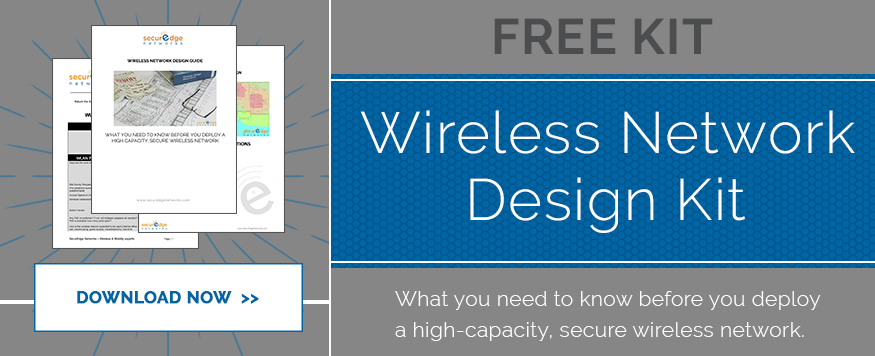
It's not a secret, well it shouldn't be, that wireless networks are alive. This sounds like a reference to a pretty terrible 80's film about a self-aware robot, but thankfully, it's not. It's actually about the fact that wireless networks are dynamic, where wifi performance is constantly changing.
Because of the nature of RF environments, mobile devices, new applications and end-users who want to connect anytime, anywhere, IT teams across all industries need a system that can sit on-top of their network to empower them with the visibility and control they need to properly monitor and manage their dynamic networks.
I'm assuming if you're here you already know you need a network management system or NMS so we won't go into detail about what they are.
Today, we're going to discuss the 5 main components or features the right network management system should include to give IT teams the visibility and control they need.
1. Real-Time Visibility and Analytics
Every feature that your network management system has is important, however, collecting and producing insights based on real-time visibility and usage analytics might be at the top of the list.
When we say visibility we're talking about a few different components:
- Signal Coverage - Allows you to see where the access points are “covering” throughout your campus or facility by overlaying the RF signals over a blueprint of your building or buildings, also known as wifi heat mapping. You can now visualize in real-time how it fluctuates throughout the day.
- Device Connections - gives you data on your end-users and their devices. Things like their IP address, current signal level they are receiving, what AP’s that client is connected to and the channel they are accessing it on. This gives you the ability to assess the performance and overall health of the wireless connection they're receiving and allowing you to troubleshoot as necessary in real-time.
- Device Locations - Your management system should be able to pinpoint the location of your end-users devices using AP’s they have accessed, in order for this to work the end-user's device should be within a certain distance for the APs to “hear” the devices.
Without real-time visibility and analytics, you’re pretty much in the dark about how both your wireless system and the users it's supporting are performing.
2. The Ability to Grow With Your Needs
Your NMS or Wi-Fi management system should allow your business to adapt to a changing environment and it's evolving WLAN design. This means the addition of new access points to support new parts of your business or the increasing numbers of mobile devices and the policies that accompany them.
AP configuration now becomes a breeze, because now instead of configuring each AP separately you can update and configure one and push it out to the rest of the access points.
3. Compliance and Reporting
For many organizations today, compliance is a mission-critical task that has to be properly addressed.
Network management systems play a huge role in accomplishing this task effectively and efficiently by providing detailed reporting capabilities.
The right system will allow you to generate reports including but not limited to:
- RF Health
- Usage data and performance data for differing devices
- Process logs
- Historical reporting
- Proactive Alerts
4. Performance Management (Bandwidth & Troubleshooting)
Managing bandwidth can be a real cost saver and wifi performance booster. You want mission-critical applications to take the forefront and those that are recreational to either be inaccessible or controlled.
The right network management system will enforce bandwidth shaping policies that are based on user, device location, time and applications being used.
Again, this comes back to point that your network is dynamic and has to be constantly monitored at all times to maintain proper performance and quickly troubleshoot problems before they can have a major impact on your network.
In many cases, the insights that an NMS provides will allow IT teams to prevent future problems from occurringby revealing bottlenecks as well as areas that might need an extra AP for example.
For an alternative view on Wi-Fi performance watch the video below:
5. Universal Compatibility
Today's networks are growing in complexity, however, your Wi-Fi management or NMS shouldn't add to the complexity rather enhance your ability to control that complexity.
This means having the ability to sit over-top of any vendor, no matter who they are and no matter how old or new the infrastructure components are.
From legacy equipment to the latest 802.11ac wave 2 products you're NMS should be ubiquitous when it comes to providing the real-time visibility and control you require.
If it's connected to your network, you need to see it and have the ability to control it, period.






